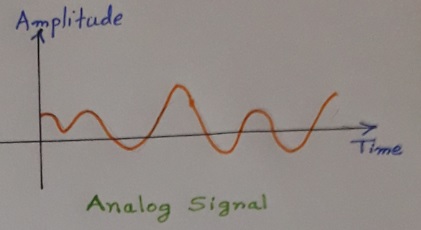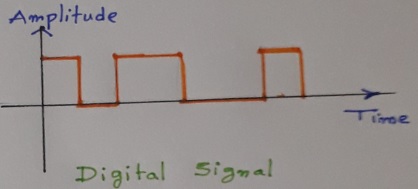Analog versus Digital signals
ANALOG – DIGITAL SIGNALS
There are two types of signals analog and digital. All naturally available signals are analog in nature.
ANALOG SIGNAL
Analog signal is a continuous signal and takes infinite number of amplitude values. Note that ‘Majority of signals in the world around us are in analog form’. Voice is best example of analog signal. Other examples are: heart beat signal, temperature, atmospheric pressure etc. All these signals have values over a continuous range and may assume an infinite number of possible values.

DIGITAL SIGNAL
Digital signal is discrete in nature. Discrete means countable (finite). Digital signal has only two levels (bit 1 and bit 0). In electrical engineering bit 1 is represented with 5 V and bit 0 is represented with 0 V.
Digital transmission is the transmission of digital pulses between two or more points/places. The signals can be binary (1010101111) or any other form of discrete-level digital pulses. Digital signals can be transmitted over a limited distance due to the attenuation and noises. Repeater can overcome the attenuation and are used to reconstruct the transmitted bits without amplifying noise signals.
